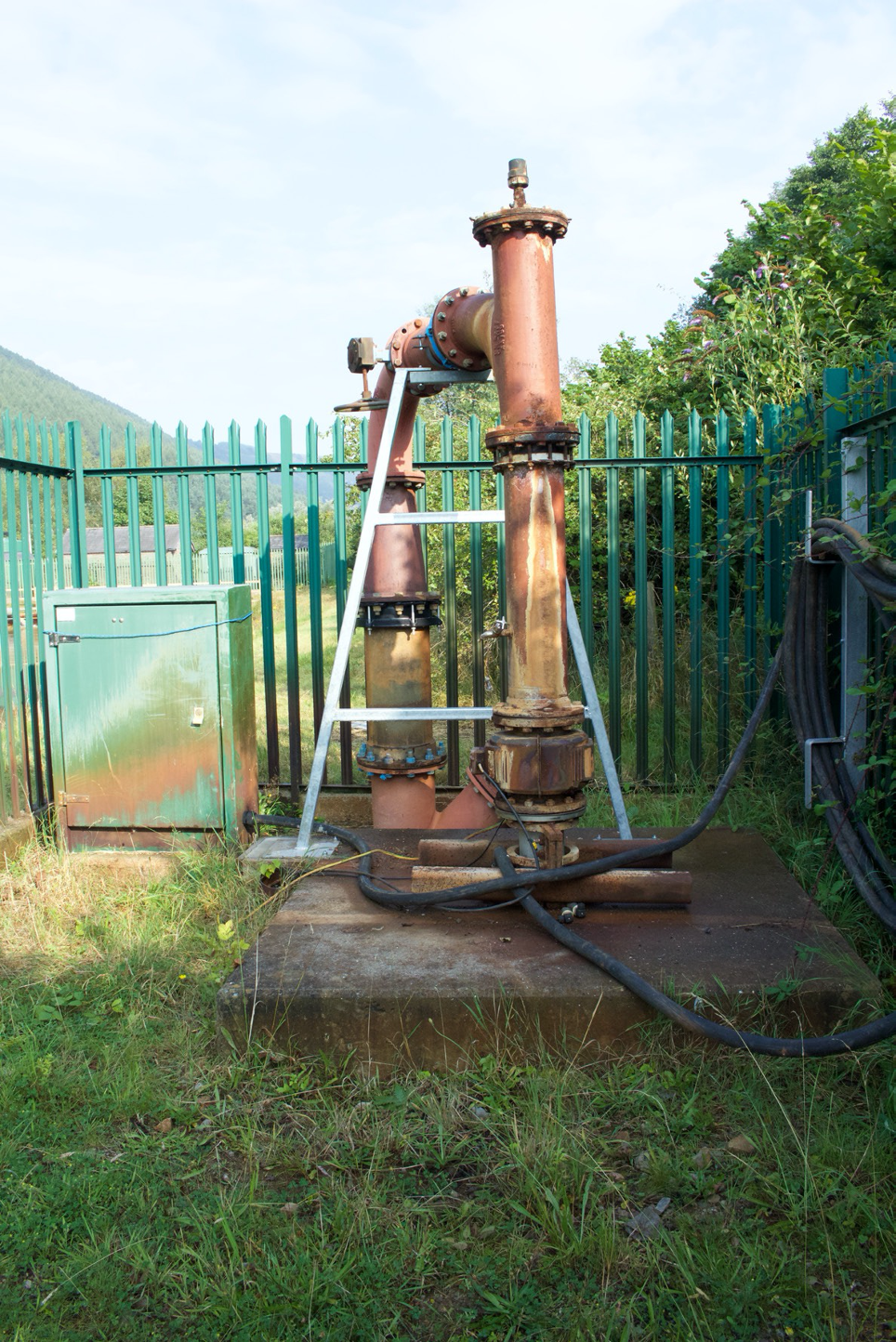Mine Water Pollution and Treatment

Water pump, Six Bells
In 2001 a borehole was driven 216m down into the old mine workings at Vivian shaft, Six Bells where an underground roadway had been backfilled in 1962.1 From this borehole polluted water is now pumped out of the mine before it reaches the river preventing the water from being polluted with raw mine water.
Six Bells is an ‘active’ treatment site, hydrogen peroxide is added to the pumped mine water. Hydrogen peroxide, H2O2, is a relatively unstable compound, its desire is to become water, which it does by readily letting go of its second oxygen atom to whatever will take it. Iron takes up oxygen so an exchange takes place and the iron is exposed to greater concentrations of oxygen than by aeration alone, speeding the oxidising process. The polluted water, pumped directly from the mine is first mixed with the hydrogen peroxide and then pumped out through a channel up to the top of a three metre high fibreglass cascade further increasing exposure to oxygen in the air.

Cascades, Six Bells Mine Water Treatment Scheme
The water travels down the aerating cascades into two parallel deep lagoons measuring 1540m2 each where the water and newly oxidised pigment particles settle. The mine water treatment process is concluded by passing the water with its residual load of suspended iron particles through an artificial reed bed. When the pumping started in January 2002 the acidic mine water contained 250mg of iron per litre of water. After a period of four months the iron concentration in the water had stabilised to 50mg per litre of water.2 By the time the water flows into the river the iron content has reduced down to less than 1mg per litre of water, which is the environmental quality standard for discharge to surface waters. For 15 years the polluted mine water has been continually pumped from these underground workings 24hr an day, at a rate of 40 litres per sec.3
Coal Authority - Understanding Mine Water Treatment: https://assets.publishing.service.gov.uk/government/uploads/system/uploads/attachment_data/file/362236/Understanding_mine_water_treatment.pdf
1 Jennifer Geroni, Rates and mechanisms of chemical processes affecting the treatment of ferruginous mine water, Master’s thesis, Cardiff University (Cardiff: Cardiff University, 2011), 61-7
2 Coal Authority, Environment schemes, Available at: http://coal.decc.gov.uk/en/coal/cms/environment/schemes/schemes.aspx (Accessed: 20th September 2013)>
3 Jennifer Geroni, Rates and mechanisms of chemical processes affecting the treatment of ferruginous mine water, Master’s thesis, Cardiff University (Cardiff: Cardiff University, 2011), 61-7


